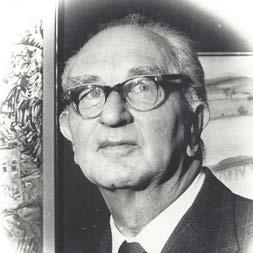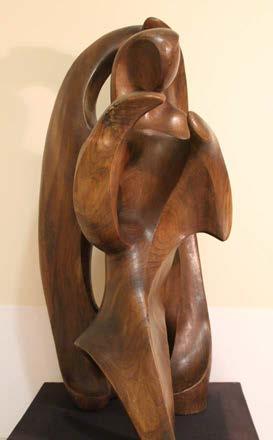
2 minute read
from the archives Art in the service of religion
by
Art galleries and supermarkets have one thing in common: they are constantly changing things around to keep you on your toes. The Metropolitan Cathedral, like most cathedrals, has enough artwork to warrant the description of an art gallery.
Advertisement
Many tourist visitors, of course, come just to see the stained glass, the carvings in the chapels, Sean Rice’s statue of Abraham, or the Mayer-Marton mosaic that once graced the church of the Holy Spirit in Ford. Two notable sculptures have been newly relocated to the premises of the Archives within the Cathedral: they are abstract designs in wood by Ernst Müller-Blensdorf.
Müller-Blensdorf twice fled the Nazis, who disapproved of his art. Born in Denmark in 1896, he was educated in Germany and after the First World War studied sculpture at Düsseldorf Academy. He created several public monuments and sculptures and in 1930 was appointed Professor of Sculptural Art at Wuppertal Academy. When the Nazis declared him a “degenerate artist” and ordered that all his work be destroyed, he moved to Norway. One adventurous step ahead of the invading Germans, he escaped to Scotland in 1940, only to be interned on the Isle of Man as an enemy alien. Released the following year, he settled in Somerset. He taught in local schools while continuing to work as an artist and sculptor, exhibiting his works in venues as diverse as Leicester and Monte Carlo. Having been at various points in his life Danish, German and Norwegian, he became a British subject in 1947, and died in June 1976.

Blensdorf’s early work was usually in stone, ceramics and stucco work. On moving to Somerset he turned to using wood, creating works in mahogany, walnut and sycamore, and discovering that local elm trees provided ideal material for his artistic expression. “Most kinds of wood”, he observed, “will split and crack in the process of drying out. But after some observing and testing, I found that elm trees stand up admirably to this. When fresh the wood is very soft and easily cut, and it hardens during the process of carving to become as hard as the hardest
The abstract sculptures now at the Archives, “Angel”, from 1958, and “Prophet”, from 1961, were created in elm wood. Since Dutch elm disease devastated British woodlands in the 1970s, it is much harder to find the wood to carve. The sculptures were given to the Metropolitan Cathedral by Ernst Müller-Blensdorf’s widow and daughter in 1984 and were formerly sited in the Baptistry. The Cathedral is believed to be the only place in the north west of England where the sculptor’s work is on public display.
They really ought to be seen in the round, in the same way as we might explore a tree trunk. The holes are part of the rhythm of the sculpture, intended to generate curiosity in the onlooker to see the other side. “The holes I make”, said Blensdorf, “are always an integral part of the design”. “Angel” especially was created with the intent of making the grain of the wood “prominent in the movement of the sculpture”. There is a religious element to most of Blensdorf’s works: an artist, he said, is someone “who translates spiritual emotions and ideas into visible bodily form”; he believed that “a material form without spiritual expression is no work of art, but simple handicraft.” Come and judge










